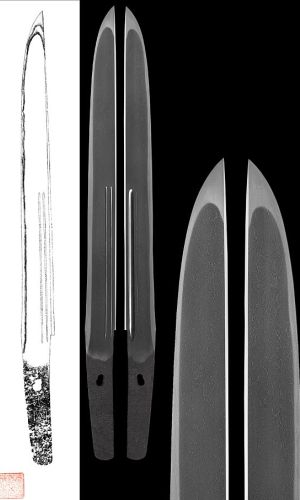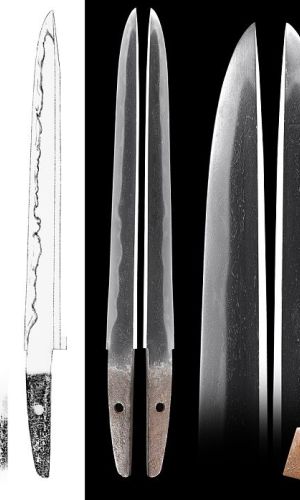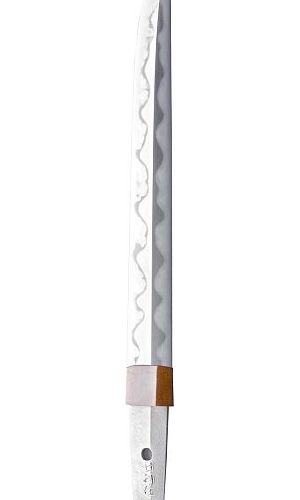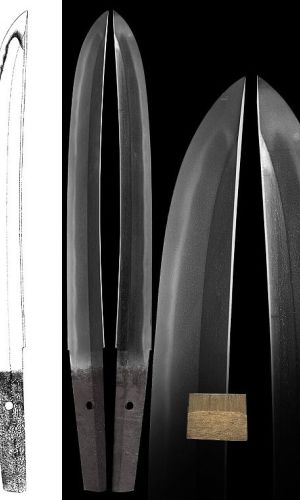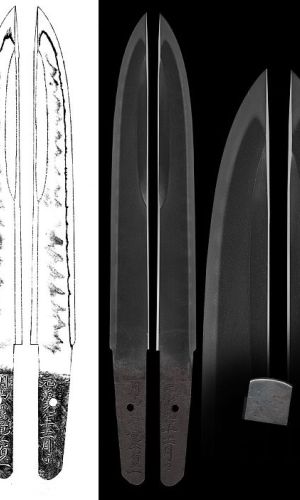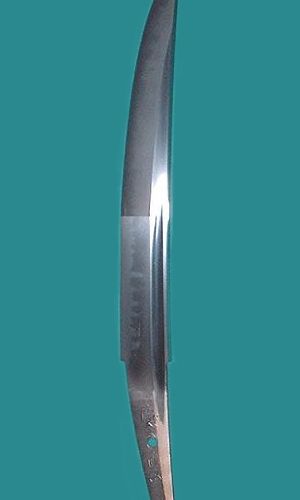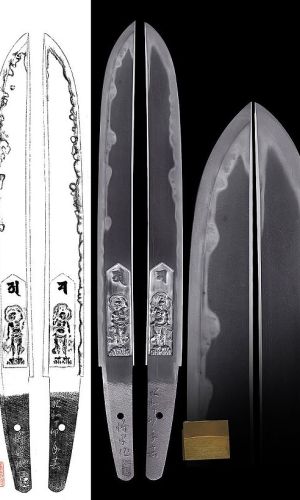Types of tanto blades
Pavel Bolf
Swords with a blade length (nagasa) up to 30 cm are generally considered to be tantó. This dimension is measured between the tip of the blade and the setting of the back (munemachi) in front of the thorn (nakago). However, longer blades can also be classified as tantó, which in their shape and especially in the way of use and type of set correspond more to tantó (see more in the paragraph 'Shape in historical periods').
All types of blade curvature (sori) are found in the tantō; koshi sori, in which the blade is curved downwards; mu sori, in which the back of the blade is straight; and lastly uchi sori, in which case the back of the blade falls towards the tip. In the last mentioned type (uchi sori) it is believed that the effect of lowering the tip was produced by repeated resharpening (reconstruction) of the blade.
The shape of the tanto has varied quite considerably over historical periods. In the middle Kamakura period 1232-1287 it was made in the hira zukuri style. The length of the blades is around 25 cm. It is typical of blades from this period that the tip of the uchi sori (or takenoko sori) is lowered, but originally they were probably straight. Tantō production in the Kamakura period was considerable, yet not many well-preserved examples have survived. This is why Kamakura-period tantō are now well-preserved and highly valued in the sword market (see photo attachment). In the late Kamakura period 1288-1333, the size of the tantō increased and the characteristic nakago curve is found. The blades were narrow in mihaba. This type of blade is called mete zaschi. This type of tantó was used to stab into a gap in the opponent's armor The typical hamon is the suguha.
In the following period of 1334-1393, known as the Northern and Southern Dynasties, there was the aforementioned tantō of above-standard length, which reached a nagas of around 35 cm. These are wide blades of the hira zukuri type with a thin kasane (blade thickness). They have a regular sori with a curve in the centre of the blade. Hamon is usually notare, hitatsura, etc.
In the Muromachi period 1394-1596, new types of tantō began to be produced. This period was a time of continuous warfare. Swords were often mass produced. Inferior material was used for their production, which was reflected in the quality of the swords. However, even in this period, excellent swords of high quality were produced. Tanta of the moroha zukuri type with two blades and tanta of the yoroi doshi type with short, thin blades with a distinctive kasane began to be produced. Their cross-section was close to an equilateral triangle and they were used for stabbing through armour.
Here ends the period of the old Koto swords and begins the period of the new Shinto swords. The most important difference lies in the methods and materials used. In the Koto period, sword makers made blades from locally sourced steel and methods passed down to them by their masters. In the Shinto period, steel production became centralised, and swordmakers began to combine the methods of different schools. Material differences in jihada were disappearing. Steel imported from Europe (nanban tetsu) also began to be used. The composition of European steel differs from that of Japanese tamahagane mainly in the content of alloys such as manganese and others. These affect the steel's ductility and, consequently, the final properties of the blade. It is not possible to say unequivocally which material is better. In this period, tantō were produced mostly hira zukuri with a distinctive sori. Notare was a frequently used hardening process.
Translated with www.DeepL.com
There were also other designs of tantó blades.
Photos for this article, where the source is not mentioned, were used with the kind permission of Mr. Tsuruta from the website of the sword shop https://www.aoi-art.com/index.html.
